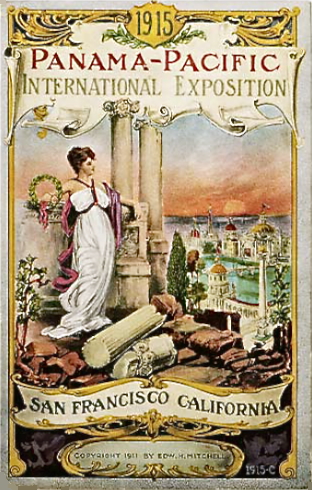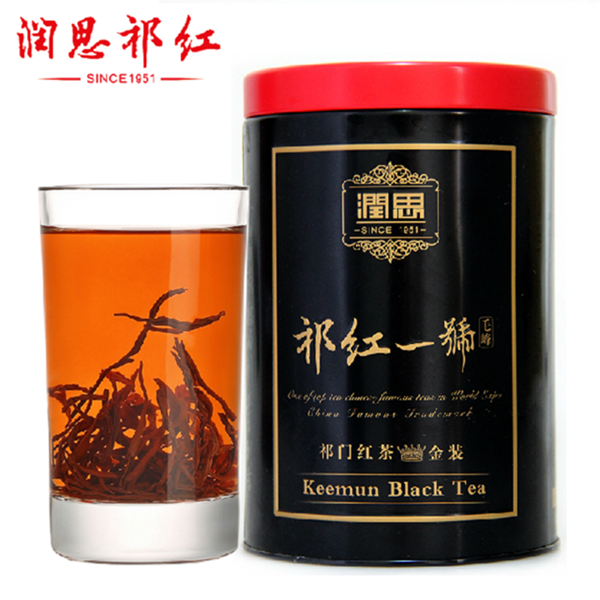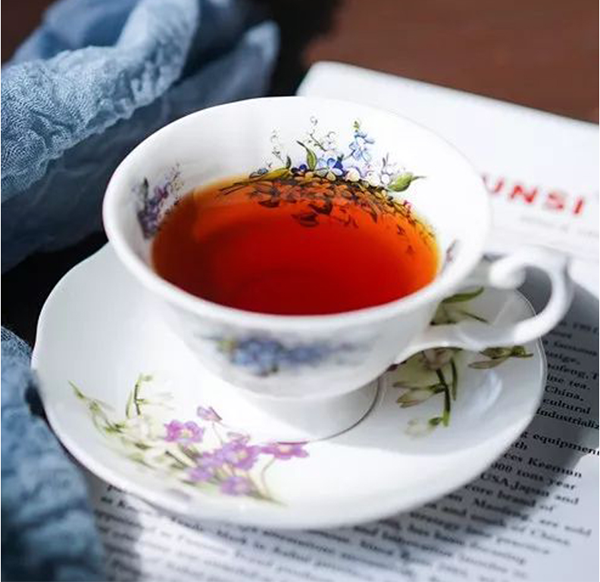Episode 156
A hundred and fifty years ago, tea exporters in China faced a dramatic shift in demand due to conflict on the high seas and fierce commercial competition. The emergence of India as Europe’s black tea supplier disrupted almost three centuries of Chinese dominance in the world’s most lucrative black tea market. China needed something new, a cream and sugar-friendly alternative to smoky old-fashioned Lapsang Souchong. That tea was Keemun (pronounced Chee-mun), a modern marvel rivaling Darjeeling at breakfast and the fragrant black Uva teas used in Ceylon breakfast blends.
Invented in 1875, the aromatic “qi hong cha” or Keemun black tea, grown in Qimen County, quickly rose to prominence, explains senior tea master Lilian Xia, President of the Canada Tea Institute. She joins Tea Biz to recount the legacy of a Chinese market-savvy entrepreneur, Yu Ganchen, the pioneer of Qimen tea, who developed the processing method for Qimen black tea and expanded its sales overseas.
Keemun, the Most Famous of China’s Black Teas Returns to Prominence
By Dan Bolton
Lilian Xia grew up in Shanghai, China, a region that has been the commercial hub of tea export for centuries. In China, tea artists are certified by local government officials who test their competency. Lilian is the first batch of senior tea masters and became the instructor at Shanghai Tea Institute and, simultaneously, the chief evaluator at the Shanghai Municipal Bureau of Labor. She helped compile the textbook “Senior Tea Artist” and lectures widely. She and her staff in Canada offer seven-level courses for adults and teens. The organization, she says, “is committed to popularizing tea knowledge, using tea as a link to strengthen cultural exchange among all ethnic groups, all classes, and all ages.” The society hosts educational tea parties, tea-themed activities, and tastings, including a public introduction to Runsi Qihong (Keemun) sponsored by the Anhui Guorun Tea Co. Lilian and I met at the Toronto Tea Festival in January.
Dan Bolton: Hongcha is experiencing a revival in China as millions line up daily for their milk tea. Keemun has a special place in the story of black tea as it is the first modern market-driven tea. Tea fragrance has always appealed to tea drinkers. Jasmine is one of the world’s oldest and most famous scented teas. European royalty and the upper classes preferred tea with milk and sugar, crumpets, and dainties, limiting sales of green tea and creating an opening that Keemun quickly filled. Will you share the history of this fascinating tea?
Lilian Xia: Let’s first talk a little bit about the history of black tea. In the early Qing Dynasty, around 1650, the Dutch and English first brought Chinese tea to the West. Most of the tea was from the Wuyi Mountains, near the eastern coast of Fujian Province. Exports were mainly green tea or oolong tea.
The tea, called bohea (an English pronunciation of Wuyi), is dried in wooden sheds, taking on a smoky flavor. Less well understood is that after pan-firing and rolling, the larger coarse leaves from the plant are pressed into wooden barrels and covered with cloth or bruised in cloth sacks to ferment before being fired a second time. During this step, the tea develops a unique “Keemun” aroma. The dark black leaves are then finished in bamboo trays suspended above smoking fire pits filled with hot coals from locally grown Pinus massoniana and slash pine. Adjusting the height of the tray influences the intensity of the aroma.
The tea known as zhèng sh?n xi?o zh?ng became rapidly famous within China as well, driven by the immense profits from its export. The English pronounced it Lapsang Souchong after the Fuzhou dialect for lap (pine) sang (wood) souchong (meaning small sort).
The tea had been traded for two hundred years by 1875 when Yu Ganchen was promoted to junior Mandarin (tax collector) in Fujian. He frequently dealt with tea exporters there and knew of the large quantities of black tea exported to the West.
Unfortunately, he was dismissed as unfit by the emperor. On returning to his hometown of Chizhou in Qimen County, in Anhui Province, he saw a nice environment spanning thousands of hectares where he could get good quality Zhuye tea leaves, so he asked himself, ‘Why not make black tea?’ Yu Ganchen returned to Fujian to study tea-making.
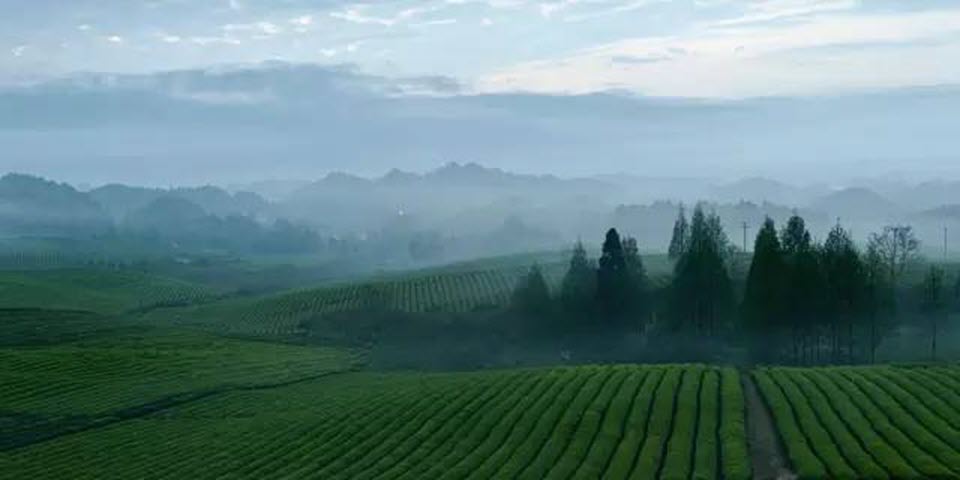
Using the hometown trees, Yu Ganchen invented a process for withering and pan-firing similar to that used in making Wuyi tea. He extended the withering and slowed oxidation to yield a more nuanced aroma, producing a better tea to sell to the West. Variations include Keemun Mao Feng, made from small leaves from the early harvest, and Keemun Hao Ya and Keemun Congou (broken leaf), which are more intense. Keemun Gongfu is preferred for use in tea ceremonies. Today, the best Keemun tea is made in Qimen County in Huangshan City, Anhui province, from leaves grown in Guichi, Shitai, Dongzhi, and Yixian.
Ganchen understood the needs of the Western people who begin their day with tea. The key modalities were color; Keemun is a deep red amber and distinctive fragrance with layers of flavor. Nowadays, many black teas are made in China, but Keemun remains the most popular.
Dan: The strong trade between China and the UK, dating to 1664, entered a rocky diplomatic period beginning in 1839 through 1842 as the first tea gardens were planted in Assam and Darjeeling and again in 1856 through 1960 when victory in the Second Opium War gave Western powers unfettered access to Chinese goods. Keemun marketers understood that winning competitions in the West and celebrity endorsements by royalty would appeal to Europeans and colonial tea drinkers in North America.
Lilian: He was quite familiar with the tea growers, exporters, and Importers from Western Fujian Province in Fuzhou City, so he contacted them and sold them to Western buyers. He opened a store in Yaodu to sell tea in Fuzhou and began marketing Keemun black overseas, where Indian black teas and Sri Lanka black teas were prominent.
A breakthrough occurred in 1915 in San Francisco at the Panama-Pacific International Exposition (an early World’s Fair). Keemun, competing with the finest Indian black and Ceylon teas from Sri Lanka, won the gold medal and became the number one choice of many Westerners, including the British and Americans.
The Queen and the royal family popularized Keemun in manuals describing the proper etiquette and preparation of afternoon tea. In London, it was known as the “queen of black tea” and is listed as one of the three most fragrant teas in the world. Keemun became quite famous in blends re-exported from London worldwide. The tea also won many national medals in China over the years.
Download: Original Exposition Visitor’s Guide

Dan: The tea was so popular that Keemun became the main component in English breakfast blends. In 1879, more than 70% of the tea sold in London was from China. Darjeeling was an expensive luxury until the 1930s. People acquired a taste for Keemun during the years when Darjeeling was scarce. By 1900, China’s market share at the London tea auction had declined to 10%, but even then, the most popular Ceylon and Indian blends of Assam weren’t considered complete without at least 10-12% Keemun. Early mass-market blends, including Lipton and Twinings, featured African teas to give them color. Blenders added Assam tea for astringency. Why was Keemun so popular?
Lilian: Keemun Tea was popular because of its characteristics, like its unique aroma — it’s very special. Even now, in China, we distinguish black tea as either Keemun or not. So, what is Keemun’s aroma? It combines a floral note, a fruity note, and a honey-sweet taste.
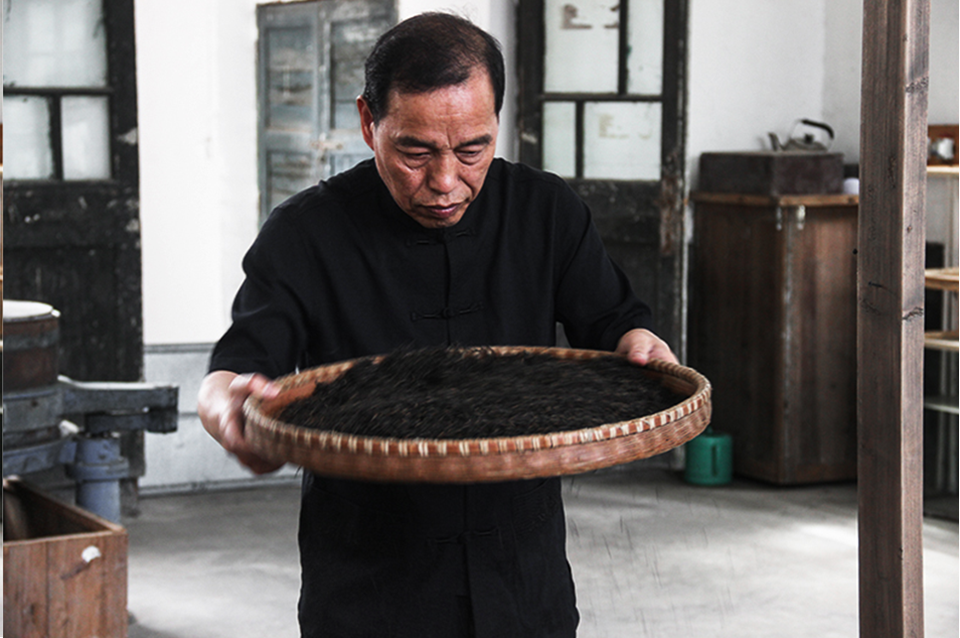
Dan: The process that yields that aroma is very interesting.
Lilian: Yes, it starts with withering, then rolling, then fermentation and drying, all the uniform processes of black tea. So, how do we get this unique Keemun aroma?
There are two reasons. The first is definitely because of the tea tree breeds and where they are planted. The proper place is Qimen, a tea-growing region between the cool, fog-enshrouded Huangshan (Yellow) Mountains and the Yangtze River. The cultivar is called Zhu-ye-zhong. It is the same plant used to make Huangshan Maofeng, a grassy and vegetal full-leaf green tea plucked from old-growth trees.
Other critical steps involve slow fermentation and attention to drying. There’s a high-temperature step to reduce the moisture; then, it goes through lower-temperature drying, always 80 to 90 degrees. That low-temperature drying process develops those aromas.
We know that all those tea breeds produce aromatic compounds. Lower-temperature drying facilities develop those aroma compounds to bring out fruity and floral aromas.
Sugar substances and amino acids undergo the Maillard reaction, generating substances with a honey aroma. Many substances with fruity and floral aromas, such as lactones, terpenes, and alcohols, are generated, contributing to the distinctive Keemun black tea aroma characterized by hints of flowers, fruits, and honey. This unique scent is called Keemun aroma.
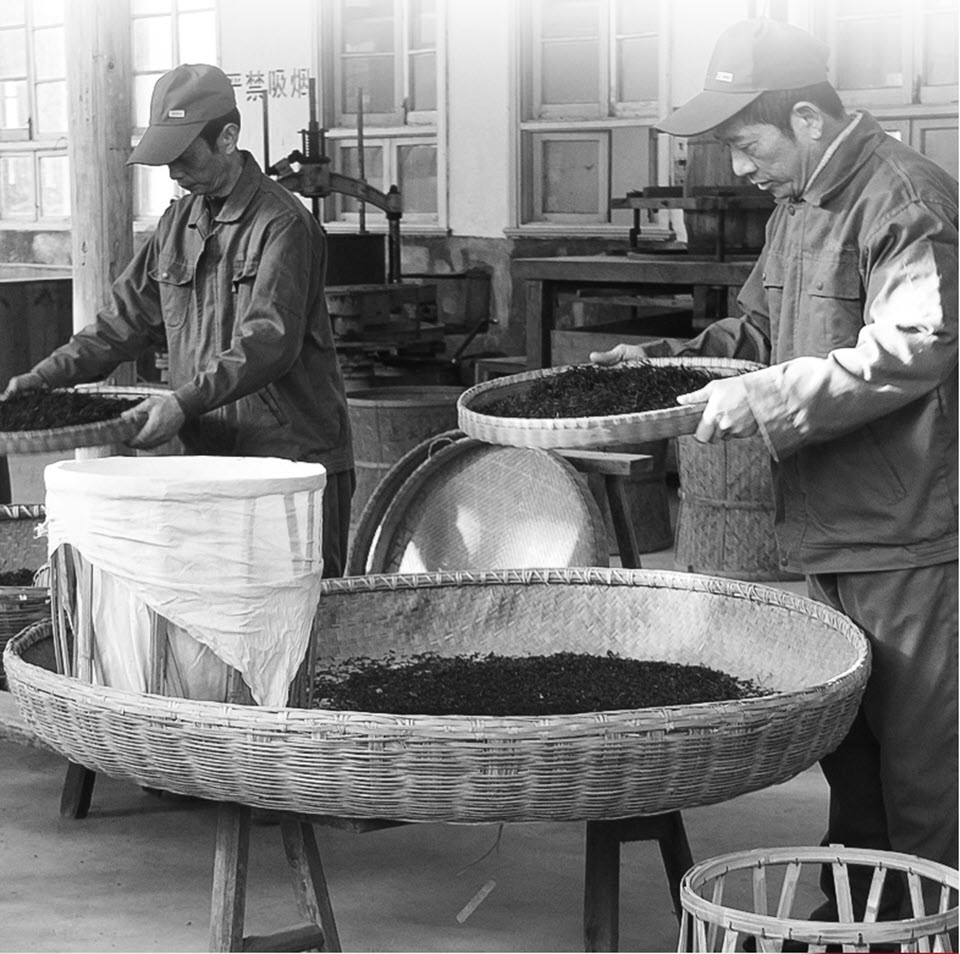
Dan: One of the reasons Keemun is so important to the traditional Assam and Sri Lanka blended breakfast teas is because they are fired at a very high temperature in a furnace, which drives off aromatic compounds. Keemun adds a distinctive and pleasant aroma as you pour the hot water. Keemun tea drinkers describe the scent of honey, apple, and orchid.
Lilian: Yes, yes. Keemun is unique. Among all those Chinese varieties, more than one hundred black teas, Keemun remains the number one because of its unique aroma.
“Keemun is unique. Among all those Chinese varieties, more than one hundred black teas, Keemun remains the number one because of its unique aroma”
– Lilian Xia, President Canada Tea Institute
Dan: Will you tell listeners about the Runsi Qihong (Keemun Tea) brand? I was very impressed tasting the tea at the Toronto Tea Festival, and so were many others at your crowded booth.
Lilian: The tea is from what used to be a state-owned company and the biggest producer. It is called Anhui Guorun Tea Company Ltd. Mr. Yu Ganchen, who invented Keemun, owned the tea house that was the predecessor of the Guorun Tea Company. Runsi Qihong is their brand.
Before 1949, tea was mainly handmade and primarily sold to tea houses. But afterward, around 1950, China’s modern tea factories increased production, increasing exports. From the 1990s to the early 2000s, Chinese tea factories experienced another important reform, moving from state-owned to limited liability companies. In 2003, with the restructuring of its joint stock, Guorun became the most prominent company specializing in Keemun black tea. It is also the only factory producing diplomatic gift teas for official guests such as the Prime Minister from Britain or Queen Elizabeth.
Runsi Qihong has 12 EU-certified tea gardens and enjoys the title of national standard in China. So, as Keemun black tea is frequently chosen as a diplomatic gift, the highest grade is not premium; there is another grade called gift on top of the premium. Diplomats consistently choose Keemun black as the national gift.
Dan: That’s a prestigious role. According to the China Tea Marketing Association, 7,300 metric tons of Keemun tea are produced annually on 12,600 hectares of land. The tea is primarily for export, generating 5.52 billion yuan (about $808.6 million in US dollars in 2022). Will you explain the role growers play in the process?
Lilian: Guorun Co., Ltd. boasts significant productivity, employing highly mechanized tea garden management, plucking, and processing methods. However, producing the highest-grade teas involves meticulous handpicking and processing to ensure their unique, superior quality. For this, the company hires tea farmers skilled in the delicate task of tea picking, compensating them with labor fees. This blend of automation and traditional craftsmanship ensures the excellence of their tea.
Dan: Thanks for explaining that. So, let’s talk briefly about the Canada Tea Institute and its mission.
Lilian: We created the Canada Tea Institute in 2017 as a not-for-profit organization. We want to improve the tea culture and tea education. These days, we’re also trying to improve the economic development of tea. Most of our members are tea professionals and tea enthusiasts. We have our guiding principles. They are traditional spirits of tea masters, such as harmony, humility, genuineness, and equality. Those are the four guiding principles of our institute. So, we organize tea-related events and activities, such as tea master training programs and sometimes study trips. We have organized tea trips to some tea-producing areas in China, and hopefully, we can organize trips to other tea-growing countries, such as Japan.
During the past six years, CTI has organized over 100 tea-themed events involving more than 4,000 participants. By taking these steps, we’re working to diversify the Canadian tea market, making it more vibrant and dynamic.
Dan: I was happy to see all the young people at your booth. Will you briefly discuss your impression of young people and your role in educating those interested in your teas?
Lilian: I found many people of different ages interested in tea, and I was surprised that there are so many young people. I’ve noticed their enthusiasm for tea in the tea courses I’m giving young folks. They might not know all the ins and outs yet, but their interest is sky-high. They’re not just into the taste; they’re curious about blending their own, which is pretty much like creating something new, and they’re super keen on diving into the tea culture. It’s not just about, “Hey, this tea tastes good,” but more about, “What’s the story behind it? Why do we drink it this way?” They’re eager to explore different types of tea, how to brew them to get that perfect taste, and even which teawares best complement each tea. Honestly, it makes me really happy to see their passion for all aspects of tea, not just the flavor but the whole culture and creativity behind it.
Usually, in China, we use a gaiwan, a covered cup for brewing green teas, flower teas, etc. I also demonstrated Gaiwan brewing in class. Young students use those clear, translucent glasses because it lets them see the tea right inside; it piques their curiosity about the brewing process and its cultural significance.
I think it’s very, very amazing that since ten years ago, or even seven years ago, tea lovers have been aging. I mean, they love tea because they can feel the beauty of calm and simplicity. They are like 40 years old or 50 years old.
At that time, young people liked sweet drinks such as coffee and Coca-Cola, But now I see maybe it is because of the popularity of milk tea and bubble teas that many young people started to drink tea. Tea has become integrated into the daily lives of young people. From the bubble tea, they will pay attention to “This is green tea. This is black tea. This is oolong tea.” Then, they will seek more information about blended teas or different straight teas, I think it’s very good.
Photos courtesy Canada Tea Institute | Runsi Qihong Tea
Canada Tea Institute
7240 Woodbine Ave.
Markham, ON L3R 1A4
Canada
Phone +1 (647) 939-7311
Email [email protected]
Powered by RedCircle
Share this post
Invented in 1875, the aromatic “qi hong cha” or Keemun black tea, grown in Qimen County in China’s Anhui Province, quickly rose to prominence, explains senior tea master Lilian Xia, President of the Canada Tea Institute. She joins Tea Biz to recount the legacy of a Chinese market-savvy entrepreneur, Yu Ganchen, the pioneer of Qimen tea, who developed the processing method for Qimen black tea and expanded its sales overseas. | Episode 156 | 23 Feb 2024

